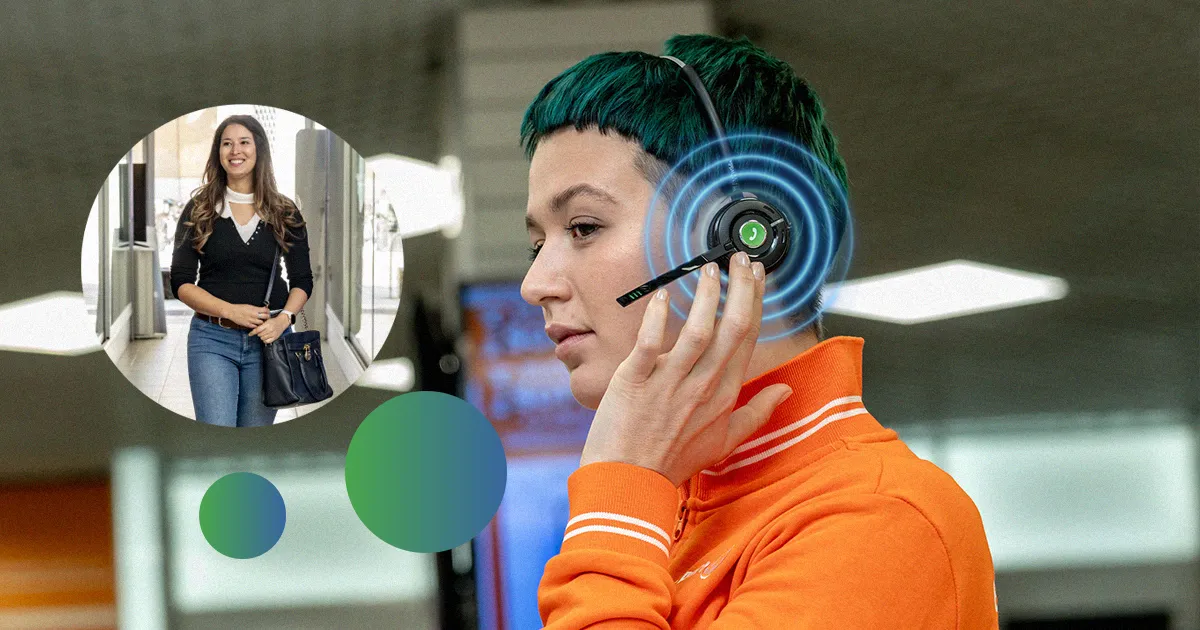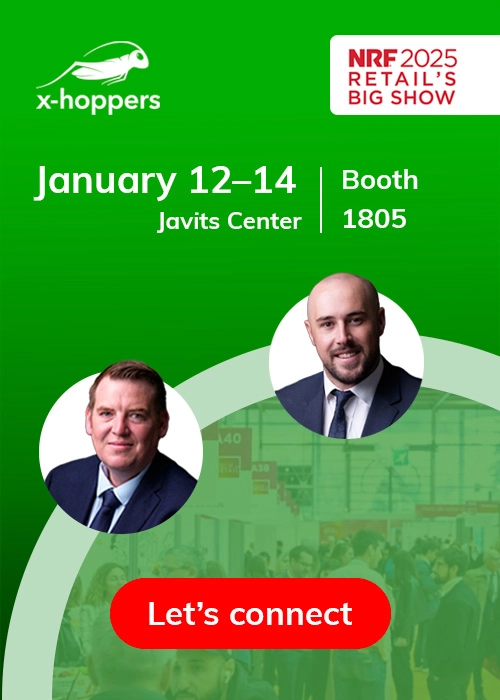
When you think of cutting-edge technology, the first industry that comes to mind may not be retail — but it should be. From AI-fueled cameras to robots, retail is full of powerful systems and gadgets that improve operations and make shopping easier. However, what has really moved the needle on increasing efficiencies has been not any one technology per se, but in the ability to bring them all together using IoT.
IoT and Retail: A Blossoming Relationship
The internet of things (IoT) refers to a collection of devices that connect and interact with the cloud and each other over the internet or another communication network. In essence, it’s the ecosystem that allows things like smart fridges to send alerts when the temperature rises and automated stores, such as Amazon’s Just Walk Out technology, to function. And before you think it’s a fringe system designed for exclusive use in cashierless stores, spending on IoT in the retail industry is predicted to increase from $28.14 billion to $177.9 billion by 2031. Showing that even though Amazon has recently shifted from all-pervasive store tech to smart carts, the future of IoT in retail is only set to get brighter.
5 Internet of Things Retail Trends
While the beauty of deploying IoT in retail stores is the power to create unique, seamless customer experiences, there are quite a number of individual systems and gadgets that show off specific IoT applications in retail that bring benefits not only to store operations but to the shopping experience as a whole.
Quick, frictionless checkout
Following our earlier mention of Amazon Just Walk Out technology, stores have been quick to offer a range of smart POS systems that match their customers’ shopping needs. In many grocery stores, for example; a customer can choose to pay at a traditional cash register, self-checkout machine, scan-and-go device or even a store app. Often all payment systems are available at once, requiring that they all be connected and share their combined payment information to cloud-based systems and dashboards so digital payments can be secured and stores can have a clear view of real-time sales.
And while few stores have a payment experience as comprehensively connected as Amazon Go, the need to connect POS devices to other store systems is still very acute. For example, app payments alone without any gated barrier or camera system can encourage unscrupulous shoppers to walk out with unpurchased goods. And self-checkout machines that fail to catch a store associate’s eye when there’s a problem also lead to theft or lost sales. But, when these same payment systems are connected to barriers, cameras and even employee headset systems, such as the x‑hoppers complete retail headset system, it becomes much easier to quickly serve customers and keep an eye on stock at the same time.
Full and tidy shelves
There’s nothing more frustrating than coming across an empty shelf only to find boxes and boxes of stock in the back — especially if you find out it’s been like that for a whole shift. At that point, hundreds of lost sales could have been avoided if only you had known about the problem sooner. However, one of the great IoT applications in retail is the advent of smart shelves that tackle just that.
Using a combination of cameras, inventory management systems (IMS), sensors, digital shelf labels and radio frequency identification (RFID) technology, smart shelves can automatically detect when an item has been removed or purchased and send an alert to retail staff, whether through a messaging platform or a headset system, so they can quickly jump in to restock. The same is also true of another IoT retail trend, restocking robots such as Tally, which scan shelves and sends alerts to staff based on the state of the products on the shelves. However, while also an IoT device, these robots are less flexible than smart shelves as smart shelves can also instantly update pricing, provide customers with more product details and even collect data and insights to help retailers improve their store offerings in the future.
Customizable in-store messaging
Part of the secret to advertising is getting the message to the right person at the right time. With traditional in-store advertising, you know people in your store are looking for a product you sell — you just don’t know which one. By combining digital advertising with IoT in retail stores, however, suddenly not only do you know what items they’re interested in, but you can instantly send targeted messages and ads to them.
One way this is done is through a combination of beacons and dedicated store apps. When a customer has a loyalty or store app downloaded on their phone, Bluetooth beacons at the entrance or specific locations in the store activate, sending target notifications to the customer’s smartphone. The same can be done with digital signage and shelf labels. Again, using IoT to connect them to an app and beacons, digital signs can pick up what a customer is interested in and let them know about offers, discounts and special promotions. This is a powerful tool that not only helps stores steer customers into increasing their basket spend but also may serve as a growing revenue stream as more producers race to add their ads to in-store media.
For a more human touch, the same technology can also connect to store headset systems, letting store associates know when important customers enter the store so they can be greeted personally or even led to a planning or personal shopping appointment. As in all of these cases, the way the technology is implemented can easily be varied and dictated by the needs of the type of retail and the clientele.
Real-time safety and security alerts
With the global rise in retail crime, it’s becoming imperative for retailers to not only discourage theft but also find ways to protect customers and employees. As a result, smart cameras using AI-powered software, such as computer vision, are becoming more popular as they can do everything from detecting theft to spotting trips and falls.
How does it work? The AI software spots patterns in the footage, which triggers an alert that’s sent to security staff over a messaging platform or a headset system. Alternatively, in the case of a small shop without a security team, the message can be broadcast over the intercom, alerting the thief that they’re being recorded. Even in cases where the crime is still committed, this type of IoT and retail system still keeps staff in the loop, making it easier to pull together evidence and even just restock the shelves so no further sales are lost as a result.
Empowering Staff with Generative AI
No discussion of IoT in the retail industry (or any industry trends for that matter) would be complete without mentioning generative AI. Now while AI assistants have been quickly rolled out to office-based workers through inclusion in web searches and communication platforms, getting that same technology to frontline workers relies on using smart wearable devices that are handsfree, intuitive and easy to use regardless of where employees are in store.
Why specifically wearables? Because while it’s simple to add generative AI assistants to mobile scanners and tablets, this makes it easy for them to be misplaced, lost or broken. With wearable devices, staff members don’t have to worry about losing the device and can easily find it whenever it’s needed. And since AI assistants can be connected to product databases or IMS, if employees are caught off guard by a customer query, all they have to do is ask the AI assistant a question in natural language and they’ll get a response back quickly that they can then pass on to the customer. This access to knowledge on demand means customers never have to wait for an employee to track down a more knowledgeable colleague or check a computer terminal. And if they use a smart headset system, frontline workers can even keep their eyes up, ready to serve customers instead of being buried in a screen.
The added benefit of headsets over other wearable devices such as smartwatches, is that they also serve as an in-store communication device that connects all the store associates into a broadcast where, in the case of x‑hoppers, they can also receive calls and notifications so they’re tuned into the stores IoT ecosystem, helping them work smarter while still providing an enjoyable in-store experience.
Key Takeaways
When it comes to how IoT is transforming the retail industry today, we’re already seeing practical applications of IoT in many store processes, but especially in:
- The checkout process
- Stock management
- In-store advertising
- Security
- Staff access to knowledge
Each of these examples depends on several different technologies that continuously share information and work together to create distinct solutions that help retailers do more with less and improve the customer and employee experience.
However, to get the full benefit of a truly connected store, retailers cannot forget to connect their staff as well. Because what good is a smart shelf if it’s just sending alerts to a screen when staff are busy on the frontline serving and helping customers? In fact, it’s telling that Amazon is pulling out of completely automated shopping and opting to focus on smart carts instead. Connected stores can automate most core functions and get customers the products they need, but they completely ignore a common reason customers go to brick-and-mortar stores in the first place — to interact with friendly and knowledgeable staff. When customers want a completely contact-free shopping experience they don’t need to go to a store because they can always shop online. So ensuring that there is always an element or option to have personal service is one way that stores can continue to embrace the hottest tech trends, including IoT, without sacrificing the customer experience.
And while there are multiple ways to deploy technology with a human touch, x‑hoppers is the most comprehensive headset solution out there to help you not only improve in-store communication but also connect your store associates to colleagues, customers, systems and beyond. With access to a store broadcast channel, full telephony functions, smart call points, an AI assistant, open APIs and hundreds of ready-to-go integrations, x‑hoppers has everything you need to create the unique store experience that not only improves your store processes but also helps you provide unforgettable customer and employee experiences.
But regardless of what you choose, adopting a system that gives you the flexibility to connect all your store systems to your employees will allow you to create an IoT-powered shopping experience that will help you improve store operations and stand out from the competition.


